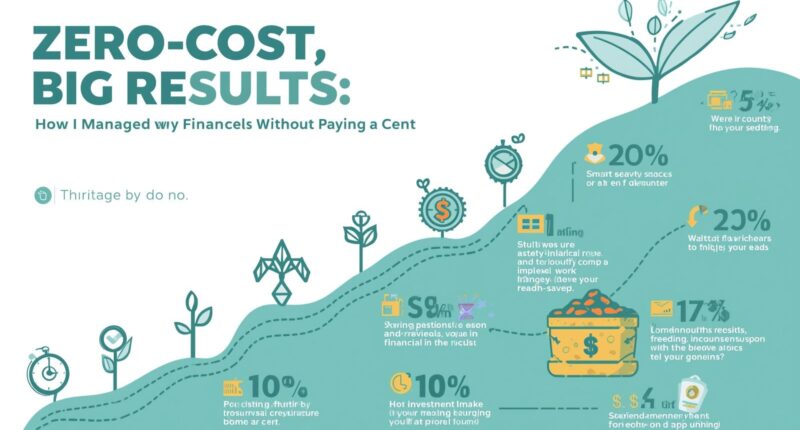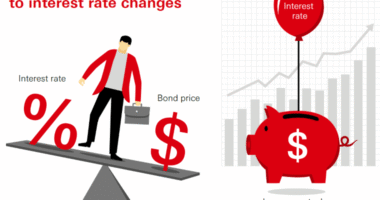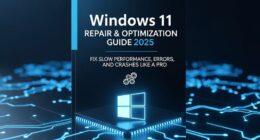In a world filled with paid apps, subscription plans, and pricey financial advisors, managing money can seem like an expensive skill to learn. But what if you could take full control of your finances — without spending a single cent?
That’s exactly what I did. Through a mix of free budgeting apps, smart planning tools, and online financial resources, I transformed my financial habits, boosted my savings, and built a sustainable plan for long-term stability. In this article, I’ll share how you can do the same — step by step — using completely free software.
The Turning Point — Realizing I Needed a System
Like many people, I once thought I was “good enough” with money. I paid bills on time, saved occasionally, and avoided major debt. But I had no clear idea where my money went each month.
When I started tracking my spending, I discovered I was losing hundreds of dollars to small, unnoticed purchases — subscriptions, dining out, and impulse buys.
That realization pushed me to find tools that could help. I didn’t want to hire a financial planner or pay for a budgeting app, so I looked for free alternatives. The results completely changed the way I manage my money today.
H2: Step 1 — Setting Up a Budget with Free Software
The first step to financial clarity is having a budget — and free software makes that easier than ever.
Mint — The All-in-One Free Budgeting App
I started with Mint, a free app by Intuit that automatically connects to your bank accounts, credit cards, and bills. It tracks spending, categorizes transactions, and shows you exactly where your money goes.
Why it works:
-
Automatic expense tracking
-
Real-time account sync
-
Budget alerts and monthly summaries
-
Free credit score monitoring
Mint helped me visualize my finances at a glance. Within the first month, I discovered I was overspending on dining by nearly 30%. Just seeing that number motivated me to make immediate changes.
Google Sheets — Custom Budget Freedom
For those who love flexibility, Google Sheets offers complete control. I found free templates online that helped me build a personalized budgeting spreadsheet.
Pro tip: Use color-coded categories and formulas to calculate monthly savings rates automatically.
By combining Mint’s automation with Google Sheets’ customization, I created a hybrid system — automated tracking plus personalized analysis.
Step 2 — Automating Savings with Free Banking Tools
Once I knew where my money was going, the next step was to automate saving. I discovered that many banks offer free digital tools to help manage this process.
Automatic Transfers
I set up automatic transfers from my checking to my savings account every payday. Treating savings like a “mandatory bill” made it effortless to build an emergency fund.
Round-Up Features
Some banks and fintech apps (like Chime or Revolut) round up every purchase to the nearest dollar and save the difference. These small amounts added up to over $400 in six months — without me even noticing.
Separate Savings Goals
Using online banking dashboards, I created multiple sub-savings accounts labeled “Emergency Fund,” “Travel,” and “Investments.” This helped me stay focused and avoid dipping into funds meant for other goals.
Step 3 — Tracking Investments Without Paying for Tools
Before, I thought investing required hiring a broker or paying for a platform. But I learned that free investing software gives you just as much control and insight.
Yahoo Finance and Google Finance
I used Yahoo Finance and Google Finance to track stock performance, monitor market trends, and build virtual portfolios. Both tools are 100% free and provide real-time updates.
Morningstar’s Free Portfolio Tracker
Morningstar offers a free version of its portfolio tracker, which allows you to analyze performance, risk, and diversification.
This gave me a better understanding of how my investments were performing and where I could improve — all without spending a dime on premium software.
Step 4 — Mastering Debt Repayment for Free
Debt can easily derail any financial plan, but I found free tools that helped me manage and eliminate it efficiently.
Undebt.it — Free Debt Snowball Calculator
This simple online tool allowed me to enter my loans and credit card balances and choose between different repayment strategies (like the snowball or avalanche method).
By using Undebt.it, I created a visual plan to pay off my smallest debts first, gaining momentum and motivation along the way.
Bankrate Calculators
Bankrate.com offers free financial calculators for everything — auto loans, mortgage payoff schedules, and credit card interest. These calculators helped me estimate how much extra payment could reduce my debt faster.
Step 5 — Learning Personal Finance for Free
Beyond tracking and budgeting, I wanted to build financial knowledge. Instead of enrolling in paid courses, I turned to the internet’s best free resources.
YouTube Channels and Podcasts
I followed finance educators like Graham Stephan, Andrei Jikh, and The Financial Diet — all of whom offer actionable financial advice for free.
Listening to money podcasts during my commute helped me develop a daily financial mindset without extra effort.
Free Online Courses
Platforms like Coursera and Khan Academy offer free finance courses taught by universities. I completed a basic investing course that clarified concepts like diversification, ETFs, and compound interest — all without tuition fees.
Step 6 — Monitoring Credit and Protecting My Finances
Finally, I focused on protecting my progress. Your credit score plays a huge role in loans, interest rates, and even job applications.
Free Credit Reports
In the U.S., you can request a free credit report from each major bureau (Equifax, Experian, and TransUnion) at AnnualCreditReport.com. Checking these regularly helped me spot errors early and maintain a strong score.
Credit Karma and Experian Free Tools
I used Credit Karma for real-time credit updates and personalized recommendations to improve my score. It also showed which actions (like paying down credit cards) would boost my credit fastest.
The Results — Big Financial Wins Without Big Costs
Within one year of using only free financial tools, I achieved:
-
A 25% increase in savings rate
-
Paid off two credit cards completely
-
Boosted my credit score by 80 points
-
Built a clear monthly financial plan
The best part? I didn’t spend a single dollar on software, subscriptions, or advisors. Everything was accomplished using free, accessible resources available to anyone willing to take action.
Final Thoughts — You Don’t Need Money to Manage Money
Managing your finances doesn’t have to cost anything. With so many free tools available today, you can budget, save, invest, and grow your wealth effectively — without paying a cent.
The real secret isn’t in expensive financial products; it’s in discipline, consistency, and awareness.
“The greatest investment you can make is in understanding your own money.”
Start today — pick one free tool, set one financial goal, and watch how small, consistent actions lead to big, lasting results.









